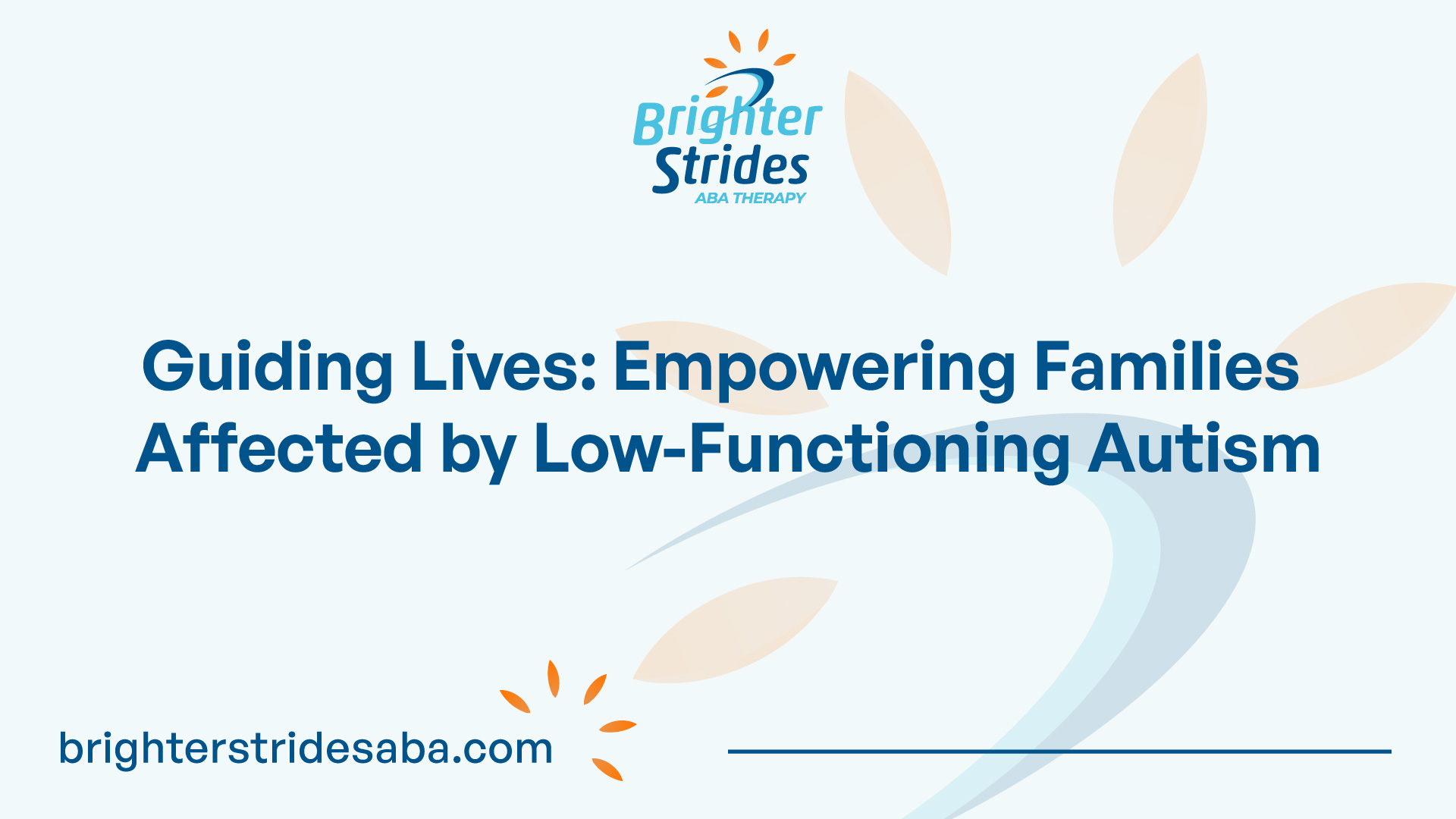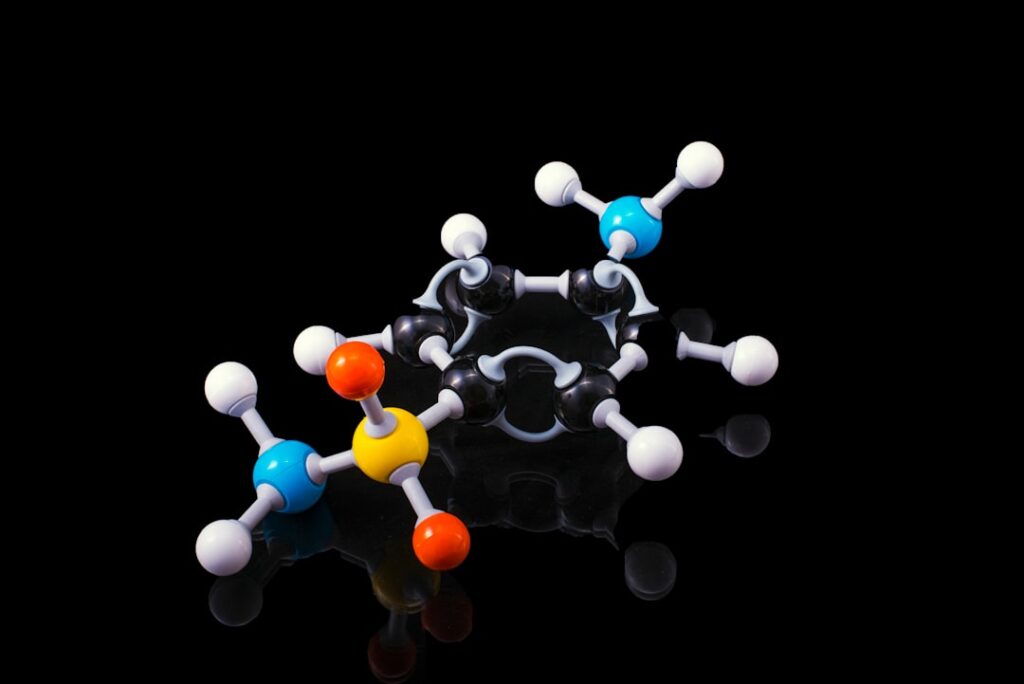Understanding Low-Functioning Autism
Low-functioning autism, a subtype of autism spectrum disorder (ASD), is characterized by significant impairments in communication, social interaction, and behavior. Understanding the causes, risk factors, symptoms, and diagnosis of low-functioning autism is essential in providing appropriate support and interventions.

Causes and Risk Factors
The exact cause of low-functioning autism is not fully understood. However, research suggests that a combination of genetic and environmental factors contributes to its development. According to Healthline, there are several factors that may increase the chance of being born with autism:

It is important to note that these risk factors do not guarantee the development of low-functioning autism. They simply increase the likelihood compared to the general population. Further research is needed to fully understand the interplay of these factors in the development of low-functioning autism.
Symptoms and Diagnosis
The symptoms of low-functioning autism typically manifest in early childhood. These symptoms fall within three main areas: social interaction, communication, and behavior. Individuals with low-functioning autism may exhibit the following symptoms:
- Difficulty initiating or responding to social interactions
- Limited or absent eye contact and facial expressions
- Delayed or limited speech, or complete absence of speech
- Repetitive and restrictive behaviors or interests
- Sensory sensitivities or aversions
- Intellectual disability
To diagnose low-functioning autism, a comprehensive evaluation is conducted by healthcare professionals, such as psychologists, developmental pediatricians, or psychiatrists. The evaluation may include:
- Detailed observation of the individual’s behavior and interactions
- Interviews with parents or caregivers to gather information about developmental milestones and symptoms
- Standardized assessments to evaluate communication, social interaction, and behavior
It is important to note that the diagnosis of low-functioning autism is made based on the presence of significant impairments across multiple domains, including communication, social interaction, and behavior.
Understanding the causes, risk factors, symptoms, and diagnosis of low-functioning autism is crucial in providing appropriate support, interventions, and resources for individuals and families affected by this condition. With early identification and intervention, individuals with low-functioning autism can receive the necessary support to enhance their quality of life and maximize their potential.
Challenges and Support
When it comes to low-functioning autism, individuals face unique challenges that require specialized support and understanding. This section will explore the behavioral characteristics, communication challenges, and supportive therapies associated with low-functioning autism.
Behavioral Characteristics
Children and adults diagnosed with low-functioning autism exhibit the most pronounced and severe symptoms of Autism Spectrum Disorder (ASD). They are typically diagnosed at level three, which indicates the highest level of support needs. These individuals often struggle with social interactions, have difficulty coping with change, and engage in repetitive and obsessive behaviors.
Some common behavioral characteristics observed in individuals with low-functioning autism include hand flapping, rocking, or lining up objects. These behaviors serve as self-soothing mechanisms for individuals with autism and help them cope with sensory overload.
Communication Challenges
Communication challenges are a hallmark of low-functioning autism. Many individuals with this condition remain nonverbal and have to rely on alternative means of communication. This can include using assistive devices, such as picture communication systems or speech-generating devices, or learning sign language.
The inability to express their needs and thoughts verbally can lead to frustration and difficulty in social interactions. It is essential for caregivers, therapists, and educators to employ effective communication strategies and provide the necessary support to help individuals with low-functioning autism communicate their wants and needs.
Supportive Therapies
Individuals with low-functioning autism require intensive therapy and round-the-clock support to address their unique needs. Supportive therapies play a crucial role in maximizing their potential and enhancing their quality of life.
Some of the supportive therapies commonly used for individuals with low-functioning autism include:
- Applied Behavior Analysis (ABA): ABA is a scientifically validated approach that focuses on teaching functional skills and reducing challenging behaviors. This therapy utilizes positive reinforcement techniques to encourage desired behaviors and discourage unwanted behaviors.
- Speech and Language Therapy: Speech and language therapy aims to improve communication skills, both receptive and expressive, in individuals with low-functioning autism. This therapy may include activities to enhance vocabulary, sentence structure, and social communication.
- Occupational Therapy: Occupational therapy helps individuals with low-functioning autism develop essential life skills and improve their ability to participate in daily activities. This therapy focuses on enhancing fine motor skills, sensory integration, self-care, and overall independence.
By providing a multidisciplinary approach to therapy and support, individuals with low-functioning autism can make significant progress in various aspects of their lives. These therapies, combined with personalized interventions and individualized education plans, can help individuals with low-functioning autism reach their full potential and lead fulfilling lives.
Treatment Approaches
When it comes to addressing the challenges associated with low-functioning autism, there are various treatment approaches that can help individuals improve their skills and overall quality of life. Some of the commonly used treatment approaches for low-functioning autism include Applied Behavior Analysis (ABA), Speech and Language Therapy, and Occupational Therapy.
Applied Behavior Analysis (ABA)
Applied Behavior Analysis (ABA) is a behavioral approach that has been extensively studied and is widely accepted among educators and healthcare professionals as an effective treatment for autism spectrum disorder (ASD). ABA focuses on encouraging desired behaviors and discouraging undesired behaviors through positive reinforcement and other behavior modification techniques. The goal is to improve a variety of skills, such as communication, social interaction, and adaptive behaviors.
One of the key aspects of ABA is the systematic measurement and analysis of behavior. Progress is tracked and measured to determine the effectiveness of interventions and make necessary adjustments to the treatment plan. ABA programs are often individualized to meet the specific needs of each person with low-functioning autism.
Speech and Language Therapy
Speech and Language Therapy is another commonly used treatment approach for individuals with low-functioning autism. This therapy aims to improve the person’s understanding and use of speech and language, whether verbal or non-verbal. The therapy sessions are tailored to the individual’s needs and may involve various techniques and strategies to enhance communication skills.
Speech and Language Therapy can target a range of goals, including improving vocabulary, sentence structure, and social communication. It may also incorporate alternative communication methods, such as sign language or augmentative and alternative communication (AAC) devices, to support individuals who have limited verbal abilities.
Occupational Therapy
Occupational Therapy plays a crucial role in supporting individuals with low-functioning autism in developing and enhancing daily living skills. This therapy focuses on teaching skills that help individuals live as independently as possible, such as dressing, eating, bathing, and relating to people. Occupational therapists work closely with individuals to create customized programs that address their specific needs and abilities.
The therapy sessions may involve various activities and exercises to improve fine motor skills, sensory processing, and self-regulation. Occupational Therapy aims to enhance individuals’ independence and participation in daily activities, ultimately improving their overall quality of life.
By utilizing a combination of these treatment approaches, individuals with low-functioning autism can receive comprehensive support to address their unique challenges and improve their skills. It’s important to work with a multidisciplinary team of professionals to develop an individualized treatment plan that considers the specific needs and goals of the individual with low-functioning autism.
Living with Low-Functioning Autism
Living with low-functioning autism poses unique challenges for individuals and their caregivers. It is important to understand and address these challenges to provide the necessary support and improve quality of life.
Daily Life Challenges
Daily life for individuals with low-functioning autism can be demanding and require assistance across various areas. These challenges often include self-care activities, mobility, communication, and cognitive or emotional demands. The severity of these challenges may vary from person to person, but they can significantly impact daily routines and overall functioning.
Individuals with low-functioning autism may have difficulty with tasks such as personal hygiene, dressing, and feeding. They may also face challenges in maintaining a consistent schedule or adapting to changes in their environment. These difficulties can affect their independence and require additional support from caregivers.
Caregiver Support and Training
Caregivers play a vital role in supporting individuals with low-functioning autism. They provide assistance with daily activities and help navigate the challenges associated with autism spectrum disorder (ASD). However, caregiving can be physically and emotionally demanding.
Caregivers may experience a range of emotions, including stress, anxiety, fear, and guilt. It is essential to acknowledge and address these feelings. While caregiving can be challenging, there may also be positive emotions related to child-centered treatments and the progress made by the individual with low-functioning autism [3].
To better support individuals with low-functioning autism, caregivers can undergo training programs that focus on various aspects of care. Behavioral therapy, such as Applied Behavior Analysis (ABA), can help individuals develop social skills and manage behavior. Speech and language therapy is another essential support approach that assists individuals in improving their communication skills, both verbal and non-verbal. Occupational therapy focuses on enhancing daily living skills and can be tailored to meet the individual’s specific needs
Caregivers also benefit from training programs that provide them with strategies and techniques to better understand and support individuals with low-functioning autism. These programs may include guidance on behavior management, communication techniques, and coping strategies. By equipping caregivers with the necessary tools and knowledge, they can provide more effective support while also taking care of their own well-being.
It is important to note that while medications are not specifically approved for the treatment of autism, individuals with low-functioning autism may use medication to manage associated conditions. It is advised to consult a physician before considering any medication.
By understanding the daily life challenges faced by individuals with low-functioning autism and providing appropriate caregiver support and training, we can enhance their overall well-being and help them lead fulfilling lives.
Intellectual Disability in Autism
Individuals with low-functioning autism often experience co-occurring intellectual disability (ID), which significantly impacts their cognitive abilities. In this section, we will explore the relationship between autism spectrum disorder (ASD) and ID, diagnostic considerations, and the genetic factors and trends associated with these conditions.
Relationship Between ASD and ID
The rate of intellectual disability is high in individuals with non-idiopathic autism spectrum disorder (ASD) [source]. Non-idiopathic ASD refers to cases where there is an identifiable cause for the autism, such as genetic syndromes or other neurological conditions. It has been observed that many genes associated with ASD are also associated with intellectual disability, highlighting the phenotypic and genotypic overlap between these conditions.
Researchers have noticed a trend of a significant increase in the prevalence of ASD, accompanied by a decline in intellectual disability [source]. This increase in research on genetic conditions has revealed higher rates of ASD features and/or diagnoses in individuals previously considered to have intellectual disability-associated disorders.
Diagnostic Considerations
Intellectual disability is defined by the Diagnostic and Statistical Manual of Mental Disorders (DSM-5) based on deficits in intellectual functioning and adaptive functioning. The DSM-5 allows for the diagnosis of intellectual disability alongside any other neurodevelopmental disorder, including ASD. However, caution is advised when making diagnostic distinctions between the two conditions.
It is important to note that standardized measures of ASD symptoms may not be appropriate for individuals with severe to profound intellectual disability. Physical disabilities and sensory deficits present in these individuals can hinder the valid assessment of certain ASD symptoms.
Genetic Factors and Trends
Individuals with both ASD and intellectual disability are more likely to have a specific genetic etiology. Rare genetic syndromes associated with ASD often result in severe to profound intellectual disability. In contrast, the general population with intellectual disability exhibits a lower prevalence of severe to profound intellectual disability [source].
Research has shown a significant overlap in genes associated with ASD and intellectual disability. The presence of these shared genes validates the overlap between ASD and intellectual disability at both phenotypic and genotypic levels. Additionally, there is a growing understanding of the complex genetic factors contributing to the development of these conditions.
Understanding the relationship between ASD and intellectual disability is crucial for providing appropriate support and interventions for individuals with low-functioning autism. By considering the diagnostic nuances and genetic factors associated with these conditions, we can enhance our understanding and improve the lives of individuals and families affected by low-functioning autism and intellectual disability.
References
- https://www.integrityinc.org/high-functioning-autism-vs-low-functioning-autism/
- https://www.goldencaretherapy.com/low-functioning-autism/
- https://www.ncbi.nlm.nih.gov/pmc/articles/PMC7463436/
- https://www.canada.ca/en/public-health/services/diseases/autism-spectrum-disorder-asd/support-autism-spectrum-disorder-asd.html

 We've just released an article!
Check out our blog!
We've just released an article!
Check out our blog!



